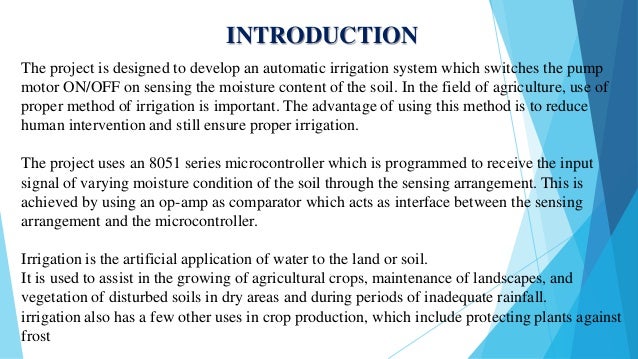
Irrigation is crucial for the economy, poverty reduction, and food security in the Peruvian highlands, leading to a need for sustainable use of water (Davis et al. The proposed framework is easily implementable, low-cost, and is predicted to conserve water through optimization of irrigation cycles based on a set moisture threshold. A user-friendly web interface is available for end-users to access and analyze real-time data. In this study, a TEROS 12 soil moisture sensor is connected to a Digi XBee wireless module for collecting measurements of volumetric water content, temperature, and electrical conductivity, which are sent through a secure IP gateway to the cloud. The current study proposes a pilot smart water irrigation framework comprised of a drip irrigation module, wireless communication module, and a sensor network for intelligently regulating water flow from the cloud.

In order to develop optimal techniques for water irrigation in Arequipa and improve the infrastructure, there is a need for development of a smart water irrigation system applicable to the existing conditions in the region. Currently, 20 ponds supplied by water runoff from the Andean glaciers are used for irrigating approximately 545 hectares of land in the Majes district (Caylloma province).


Electricity is not available in most of the agricultural fields, limiting the types of irrigation methods and technologies that can be supported.

This region has low precipitation, generally less than 100 mm per year. The Arequipa and Caylloma provinces of Peru are highly productive agricultural areas that could benefit from these technologies. With growing developments in the technology of cloud storage and the Internet of Things, smart systems have become the latest trend in major agricultural regions of the world.


 0 kommentar(er)
0 kommentar(er)
